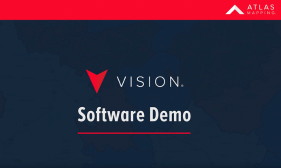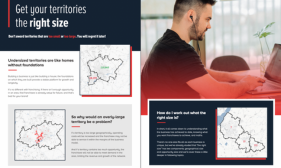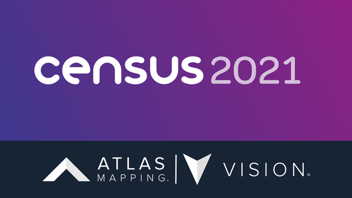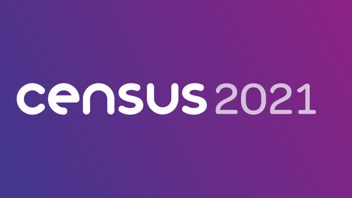Sonar 2023 will be released alongside the England and Wales census data on the 5th of June. A lot has changed since the last version of the product. We recommend reading this article to understand what changes have been made and how to transition to the newest version.
General Information
The release of the census 2021 data for England and Wales means that a new Sonar product is also available for England and Wales.
With Scotland postponing their census due to Covid 19, this Sonar release will not contain any information for Scotland. When they release their census data in either late 2023 or early 2024, we will receive an updated product again. Sonar remains unavailable for Northern Ireland.
Sonar 2023 will be released alongside the census 2021 data for England and Wales on the 5th of June for the 2022 versions of the Postcode and Administrative geography. You will need to update to the latest boundaries to use it.
What is Sonar?
Sonar is a unique segmentation system that divides the population of Great Britain into 80 mutually exclusive groups according to the types of neighbourhood in which they live. Sonar is created by and is the property of TRAC Consultancy. TRAC Consultancy specialises in the statistical analysis of customer data.
The 80 Sonar codes are organised into 6 broad lifestage groups which represent the first character of the three-digit code. These are:
Group A – Young Singles
Group B – Young Families
Group C – Families
Group D – Mature Families
Group E – Empty Nesters
Group F – Retired
They are also organised into 4 quartiles representing wealth, which comprise the second digit. These are:
Group 1 – Affluent
Group 2 – Comfortable
Group 3 – Less Comfortable
Group 4 - Struggling
The dataset then fully describes the three-digit sonar code comprising 80 detailed groups. See below for a couple of examples.
A11 – Highly Educated Young Professionals. These are mainly city centre neighbourhoods concentrated in our major conurbations. They consist of young, hardworking, individuals on the first rungs of their career ladder. The group contains a very high number of professionals working in hi-tech industries, they are a highly educated, geographically mobile group with significant numbers coming from abroad, particularly from the EU. They tend to live in rented city centre flats and apartments, they make the most of the city life and enjoy going to theatres, restaurants, art galleries and cinemas as well as to the health club.
D21 – Comfortable Rural Families. These neighbourhoods are geographically more diffuse but there is an over representation of this group in the South-East. They are quite affluent more rural areas where the children are a little older. This is a group with many professionals. Owner Occupation is the norm with nearly 88% of all households falling in that category with 52% of households still paying off the mortgage. Properties tend to be detached and the median property price in 2022 was £439,000. Levels of car ownership are also well above the norm.
What are the changes to Sonar 2023?
There are several significant changes when it comes to the new release.
- An ageing population is why older groups have more codes.
- A fall in fertility rates means fewer codes in B, C and D. The two-digit code “B2 – Young Families, Comfortable” and any three-digit groups starting with B2 do not exist in Sonar 2023.
- House price data has been incorporated to provide better indicators of wealth.
- Reduced use of ethnicity to avoid giving offence.
- Doesn’t contain data for Scotland. This will be updated when they release the census data.
What happens if you currently subscribe to Sonar?
If you subscribe to Sonar within Vision, you can move over to Sonar 2023 once you have updated to the latest 2022 postcode or administrative geography also available from 5th June.
Updating when you are using Sonar two-digit codes
These are the lifestage and affluence groups, for example:
| A1 - Young Singles, Affluent | B1 - Young Families, Affluent |
| A2 - Young Singles, Comfortable | |
| A3 - Young Singles, Less Comfortable | B3 - Young Families, Less Comfortable |
| A4 - Young Singles, Struggling | B4 - Young Families, Struggling |
For clients using demographics based on the two-digit sonar code, we can automatically transfer you to the latest version of these as in the main; they are like for like. This means you won’t need to change your Vision systems.
NOTE. The two-digit code “B2 – Young Families, Comfortable” does not exist in Sonar 2023 and cannot be transferred.
Updating when you are using Sonar three-digit codes
Due to the scope of the changes made to how Sonar 2023 was compiled, along with the changes to the detailed groups, we cannot automatically update your selected demographics. A couple of options are available when selecting your detailed (three-digit) Sonar 2023 codes. These are:
1. Choosing the most similar detailed Sonar (three-digit) groups
This requires you to decide which new Sonar 2023 groups you feel are most relevant using the Sonar Description Document. You will need to go into Vision and add these new demographics to your relevant layers. You will also have to recreate any custom demographics where you have combined multiple target three-digit groups to make a new total. For example, combining C13, C21 and D23 to make a “Target Sonar Households” demographic.
For help making these changes in Vision, see our help centre articles, "Choose which demographics display on a layer" and "Combine multiple demographics into a single value"
2. Run a new Sonar profile
If you provide us with an up-to-date list of Customer Postcodes, we can run a profile based on the Sonar 2023 data to find out which of the groups best represents your customers. This makes it far easier to choose which Sonar codes or groups to display in Vision or use within your mapping project.
What is a Sonar profile?
A Sonar profile can also be described as your customer profile. It identifies what percentage of the 80 Sonar groups your customers fall within. The groups with the highest representation in your profile are your most prominent customers and, therefore, your target market. The accompanying Sonar Description Document provides a summary of the characteristics of each segment.
You can see some example customer profiles below. We’ve created 2014 and 2023 Sonar profiles for both sample customer data sets to highlight the differences.
Comparison between Sonar 2014 and Sonar 2023 profiles
In each image below, the profile on the left is the 2013 version, and the one on the right is the 2023 Sonar profile.
Example 1

You can see in this example profile how the most prominent groups are within B, C and D lifestages, which is similar across both profiles. Affluence appears more prominent in the 2023 profile than in the 2014 profile.
You’ll notice a couple of matches in terms of three-digit codes (C21 and B32), although the group names and descriptions are now different. In Sonar 2014, C21 was “Commuting Life”, and B32 was “Suburban Young Families. In Sonar 2023, C21 is “Eastenders”, and B32 is “First Rungs of the Housing Ladder”. If you want to read the full description of the 2023 Sonar groups, please look at the Sonar Description Document.
Example 2

This example profile comparison shows that the 2023 Sonar profile’s most prominent lifestages are C, D, and E. In the 2014 profile, the prominent lifestages are A, B and D. It’s worth remembering that some key differences between Sonar versions are the ageing population and the fall in fertility rates. This could be why there has been more of a shift towards the older lifestages in the 2023 profile. Affluence remains prominent in both profiles.
Again, you’ll notice some matches in three-digit codes (D11, D12). In Sonar 2014, D11 was “Wealthy Professionals with Children”, and D12 was “Professionals with Children”. In Sonar 2023, D11 is the same “Wealthy Professionals with Children”, but D12 is now “South East Professionals”.
Our recommendation
Given the drastic changes made to Sonar 2023, we recommend running a new Sonar profile. We provide this service for free to anyone subscribing to Sonar in Vision.
If you have any questions as existing users of Sonar or are interested in adding it to your Vision subscription, please get in touch; we’d be happy to help you.






